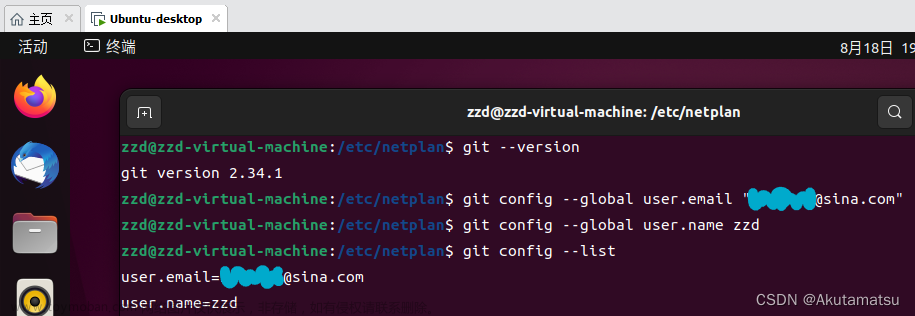1、前言
在一个向第三方平台推送消息的场景中,为了提高程序的执行效率,每次发送消息,都创建一个新的线程来完成发送消息的任务,为了提供线程的使用性能,我选择了ThreadPoolTaskExecutor线程池,结果在使用的过程中,出现了较多的问题,这里记录一下避免以后再出现类似的错误(这些错误是不应该出现的,还是对ThreadPoolTaskExecutor使用不熟悉造成的)。
2、ThreadPoolTaskExecutor用法简介
ThreadPoolTaskExecutor是Spring Framework提供的一个线程池实现,它继承自ThreadPoolExecutor类,并实现了AsyncTaskExecutor和SchedulingTaskExecutor接口,可以用于异步任务执行和定时任务调度。
我们通过配置类定义了一个ThreadPoolTaskExecutor的Bean,并设置了核心线程数、最大线程数、队列容量和线程名称前缀等参数。然后在MyService类中注入了这个线程池,并在executeTask方法中使用taskExecutor.execute()来提交一个异步任务。
通过这种方式,我们可以方便地使用ThreadPoolTaskExecutor来执行异步任务,实现多线程处理和任务调度的功能。
以下是ThreadPoolTaskExecutor的基本用法示例:
import org.springframework.context.annotation.Bean;
import org.springframework.context.annotation.Configuration;
import org.springframework.scheduling.concurrent.ThreadPoolTaskExecutor;
@Configuration
public class ExecutorConfig {
@Bean
public ThreadPoolTaskExecutor taskExecutor() {
ThreadPoolTaskExecutor executor = new ThreadPoolTaskExecutor();
executor.setCorePoolSize(10);
executor.setMaxPoolSize(100);
executor.setQueueCapacity(10);
executor.setThreadNamePrefix("MyThread-");
executor.initialize();
return executor;
}
}
import org.springframework.beans.factory.annotation.Autowired;
import org.springframework.scheduling.concurrent.ThreadPoolTaskExecutor;
import org.springframework.stereotype.Component;
@Component
public class MyService {
@Autowired
private ThreadPoolTaskExecutor taskExecutor;
public void executeTask() {
taskExecutor.execute(() -> {
// 执行异步任务逻辑
// ...
});
}
}
3、ThreadPoolTaskExecutor使用过程复现
3.1、最开始的代码——线程泄露
以下代码是最开始的一版代码,这里出现了一个非常严重的错误,直接造成了线程泄露,或者说是完全错用了线程池,反而造成了更多的线程资源浪费。
/**
* 消息推送
* 20230609 hsh
*/
public class PushNotificationService {
private static Logger logger = LoggerFactory.getLogger(PushNotificationService.class);
/**
* 线程池
* @return
*/
public static Executor getAsyncExecutor() {
ThreadPoolTaskExecutor executor = new ThreadPoolTaskExecutor();
executor.setCorePoolSize(10);
executor.setMaxPoolSize(20);
executor.setQueueCapacity(1000);
executor.setThreadNamePrefix("AsyncThread-");
executor.initialize();
return executor;
}
/**
* 消息推送
*/
public static void pushNotification(EventTask eventTask, Map<String,Object> param) {
Executor executor = getAsyncExecutor();
executor.execute(new Runnable() {
@Override
public void run() {
if(this.isSend(param)){//判断是否需要推送
String msg = "";
sendMsg(eventInfo);
}
}
private boolean isSend(Map<String, Object> param) {
return true;
}
private String sendMsg(String msg){
return "发送";
}
});
}
}
上述代码的问题,主要发生在获取线程池的问题上,即每次发送消息都调用了getAsyncExecutor()方法,本意是获取一个线程,结果这里每次都会创建一个线程池,而且线程数至少会有10个,所以每次本来只需要创建一个线程处理消息发送,结果每次都创建了一个线程池,每个线程池至少还有10个线程,结果就出现了线程泄露问题。
3.2、第一次修改——解决线程泄露问题,但是线程不安全,在多线程环境下还是可能会导致创建多个线程池实例
为了解决最开始出现的线程泄露问题,我把ThreadPoolTaskExecutor 作为对象的一个变量,每次获取的时候,判断是否为空,如果不为空时,就不再创建了。
/**
* 消息推送
* 20230609 hsh
*/
public class PushNotificationService {
private static Logger logger = LoggerFactory.getLogger(PushNotificationService.class);
private static ThreadPoolTaskExecutor executor = new ThreadPoolTaskExecutor();
/**
* 线程池
* @return
*/
public static Executor getAsyncExecutor() {
if(executor == null){
executor = new ThreadPoolTaskExecutor();
}
executor.setCorePoolSize(10);
executor.setMaxPoolSize(20);
executor.setQueueCapacity(1000);
executor.setThreadNamePrefix("AsyncThread-");
executor.initialize();
return executor;
}
//省略……
}
如果多个线程同时调用getAsyncExecutor()方法,还是可能会导致创建多个线程池实例。
3.3、第二次修改——解决线程安全问题,带来了性能问题
为了解决线程安全问题,我直接使用了synchronized 关键字,代码如下:
/**
* 消息推送
* 20230609 hsh
*/
public class PushNotificationService {
private static Logger logger = LoggerFactory.getLogger(PushNotificationService.class);
private static ThreadPoolTaskExecutor executor = new ThreadPoolTaskExecutor();
/**
* 线程池
* @return
*/
public static Executor getAsyncExecutor() {
synchronized (executor){
if(executor == null){
executor = new ThreadPoolTaskExecutor();
}
executor.setCorePoolSize(30);
executor.setMaxPoolSize(100);
executor.setQueueCapacity(1000);
executor.setThreadNamePrefix("AsyncThread-");
executor.initialize();
return executor;
}
}
//省略……
}
为了解决线程安全问题,我直接使用了synchronized 关键字,上述代码虽然可以正常运行,但是带来了非常严重的性能问题,因为synchronized 关键字包含了整个代码块,就相当于在getAsyncExecutor() 方法上使用了synchronized 关键字,该方法就变成了单线程执行了,所以效率非常低。
3.4、第二次修改——解决性能问题,带来了初始化异常
为了解决性能问题,使用双重检查锁定(double-checked locking)机制来确保线程安全同时保证处理性能,代码如下:文章来源:https://www.toymoban.com/news/detail-481550.html
/**
* 消息推送
* 20230609 hsh
*/
public class PushNotificationService {
private static Logger logger = LoggerFactory.getLogger(PushNotificationService.class);
private static ThreadPoolTaskExecutor executor = new ThreadPoolTaskExecutor();
/**
* 线程池
* @return
*/
public static Executor getAsyncExecutor() {
if (executor == null) {
synchronized (executor) {
if (executor == null) {
executor = new ThreadPoolTaskExecutor();
executor.setCorePoolSize(30);
executor.setMaxPoolSize(100);
executor.setQueueCapacity(1000);
executor.setThreadNamePrefix("AsyncThread-");
executor.initialize();
}
}
}
return executor;
}
//省略……
}
通过双重检查锁定,确实可以实现性能的提升,但是这里忽略了一个细节,就是ThreadPoolTaskExecutor 初始化,因为这里当executor 对象不为空时,直接返回了,没有进行initialize()操作,所以报了“ThreadPoolTaskExecutor not initialized ”错误,因此声明ThreadPoolTaskExecutor executor 对象的时候,不能使用new ThreadPoolTaskExecutor()方法进行定义,同时为了避免指令重排序可能带来的问题,需要将 executor 声明为 volatile 类型,以确保在多线程环境下的可见性和正确的初始化顺序。文章来源地址https://www.toymoban.com/news/detail-481550.html
/**
* 消息推送
* 20230609 hsh
*/
public class PushNotificationService {
private static Logger logger = LoggerFactory.getLogger(PushNotificationService.class);
private static volatile ThreadPoolTaskExecutor executor;
/**
* 线程池
* @return
*/
public static Executor getAsyncExecutor() {
if (executor == null) {
synchronized (executor) {
if (executor == null) {
executor = new ThreadPoolTaskExecutor();
executor.setCorePoolSize(30);
executor.setMaxPoolSize(100);
executor.setQueueCapacity(1000);
executor.setThreadNamePrefix("AsyncThread-");
executor.initialize();
}
}
}
return executor;
}
//省略……
}
4、总结
- 知识点1:ThreadPoolTaskExecutor用法
- 知识点2:synchronized 关键字
- 知识点3:双重检查锁定(double-checked locking)机制
- 知识点4:volatile 关键字
到了这里,关于第一次使用ThreadPoolTaskExecutor实现线程池的经历,反复修改了多次代码才正常使用的文章就介绍完了。如果您还想了解更多内容,请在右上角搜索TOY模板网以前的文章或继续浏览下面的相关文章,希望大家以后多多支持TOY模板网!










